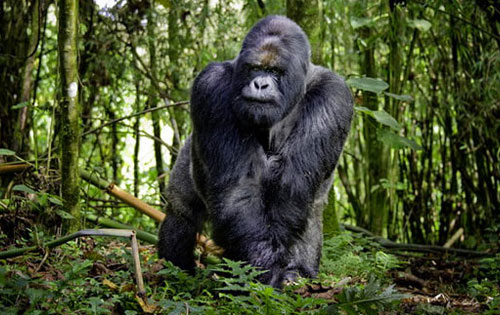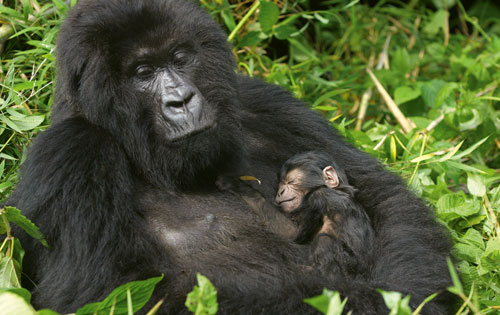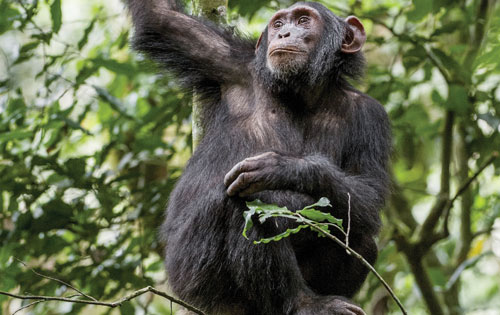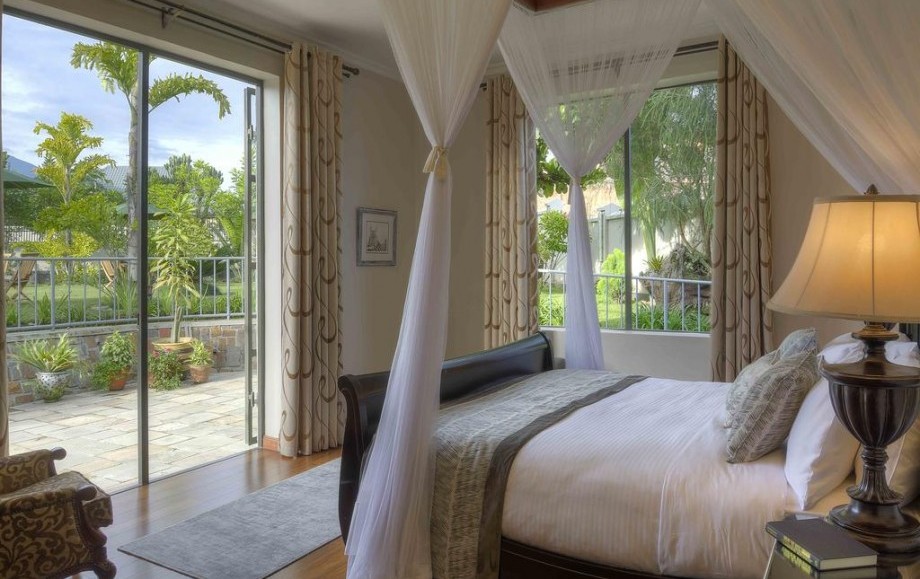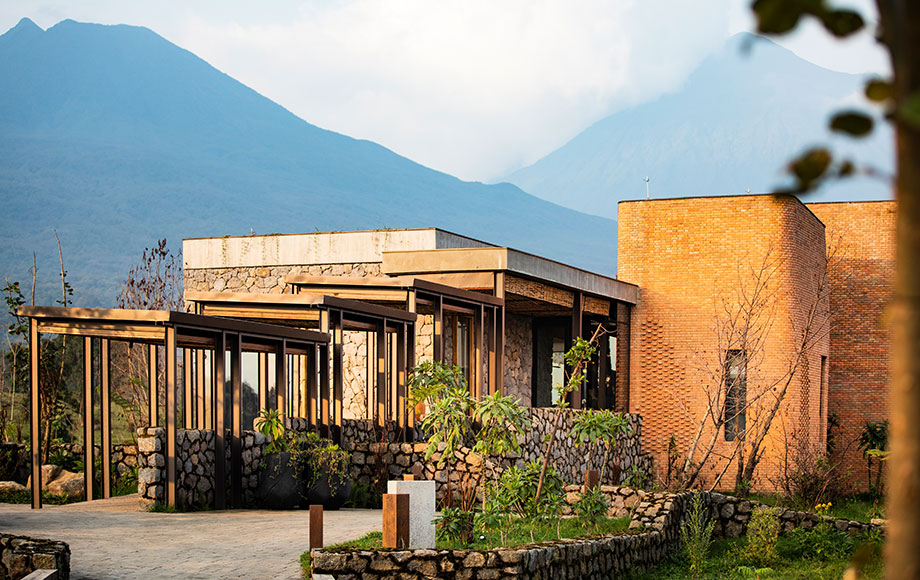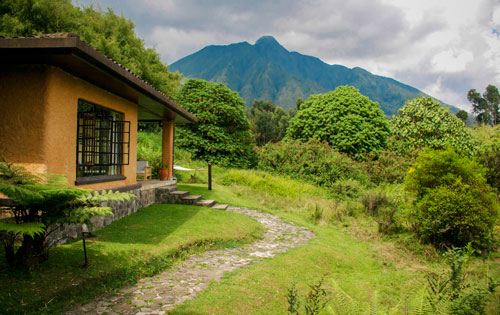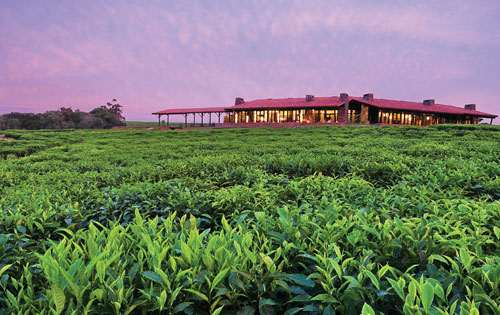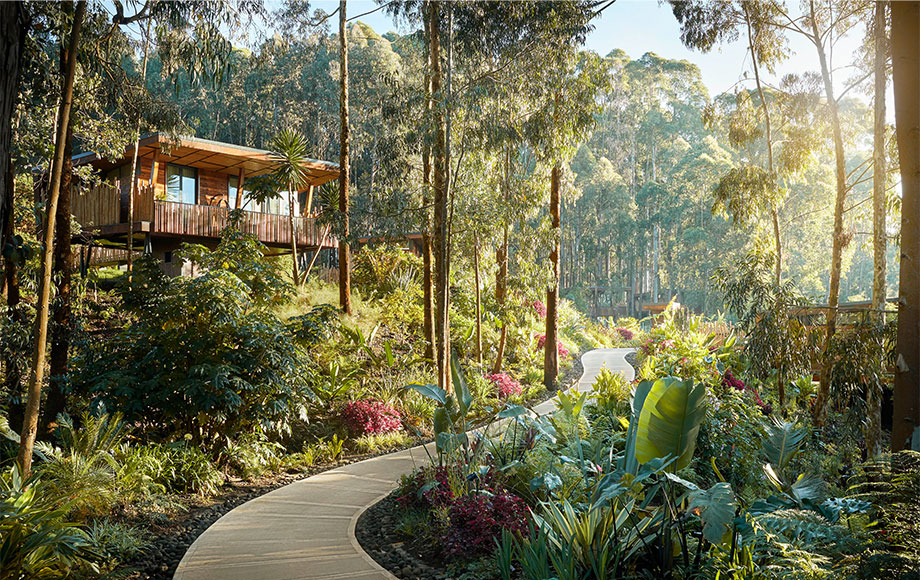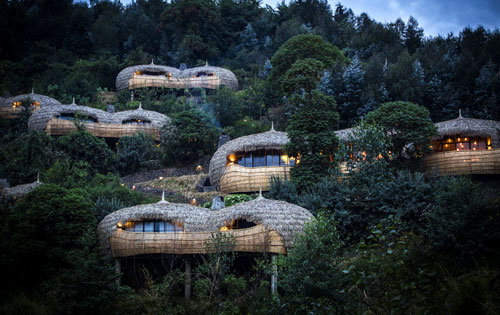Experience the most unforgettable wildlife encounter of your lifetime – a trek to see the magnificent mountain gorillas.
Rwanda’s famous Parc National des Volcans (that borders Uganda’s Bwindi Impenetrable National Park) is one of the best places to see these incredible, highly endangered primates.
As peace and stability have returned to Rwanda, the Parc National des Volcans has once again become the most popular place to undertake one of Africa’s greatest wildlife experiences. These endangered primates, made famous by zoologist Dian Fossey, live in the rainforests of the Virunga Volcanoes on the border of Rwanda, Uganda and the Democratic Republic of the Congo. The park is easily reached by road from Kigali, the capital, which is a short flight from Nairobi.
You can also trek in search of chimpanzee and other primates in the beautiful montane rainforest of the Nyungwe Forest National Park south of Lake Kivu. In the country’s east, Akagera National Park can easily be combined with a gorilla trek. The park boasts diverse landscapes, huge densities of hippo and more than 520 bird species.
Mountain Gorilla Trekking
Africa is home to the world’s largest primate, the gorilla. The Mountain Gorilla lives at higher altitude and has longer and more abundant fur than the lowland species.
Chimpanzee viewing
A healthy population of chimpanzees can be found in the pristine and beautiful Nyungwe Forest, south of Lake Kivu, and guided treks can be arranged here.
The Virunga Volcanoes
This majestic chain of volcanic mountains in northwest Rwanda is not just the best place to see mountain gorillas, it is an area of great natural beauty.
Nyungwe Forest National Park
This magical montane rainforest is one of the best preserved in Africa and home to over 1,000 plant species, and its mammal species include a remarkable 13 species of primate.
When is the best time to visit Rwanda?
Rwanda can be visited year-round, however there are certain times of year that are far more popular. If you are wishing to see the incredible mountain gorillas in Volcanoes National Park, generally the best time of year to visit is during the drier months of June to September. Rwanda is also popular for visitors who want to see the chimpanzees; the best times to see these primates is during the two rainy seasons – from March to May and during October and November. There are four fairly distinct “seasons” that we have broken down for you below:
This time of year is Rwanda’s “dry season” and the best time to see the legendary mountain gorillas in Volcanoes National Park. It is also the best time to visit some of Rwanda’s other major parks including Akagera National Park and Nyungwe Forest National Parks. Even though it is the dry season, it is important to still take waterproof clothing when trekking to see the gorillas. If you are combining a visit to the gorillas with a safari, this is the time to go. This time of year is peak season in neighbouring Kenya as well as across much of Southern Africa – including both Botswana and Zimbabwe.
From about mid-October to the end of November is the country’s “short rains” season. Rains tend to come in short heavy bursts, whilst it is also a great time for birdlife. It is still possible to trek and see the gorillas at this time, however be aware that trekking conditions can be tough.
The months of December to February is the other terrific time to visit Rwanda when conditions are drier. Outdoor activities (including trekking to see the gorillas) are popular. If you are looking to combine a gorilla trek with a big game safari, the southern section of Tanzania’s Serengeti National Park is the best option.
Rwanda’s “long rains” span from early March until mid-May, and as a result, one of the quietest times in the country. The rain can be particularly bad in the mountain regions and almost continuous. Though possible, gorilla trekking is not recommended during this time. If you do wish to see chimpanzees, than this is a very good time to go. The reason for this is that their food source – figs and fruits – are ripe, and the chimpanzees tend to be more stationary and sitting in the lower tree branches.
Rwanda FAQ’s
JOIN OUR
E-Newsletter
Sign up to receive updates about exciting journeys, special offers and more
"*" indicates required fields
